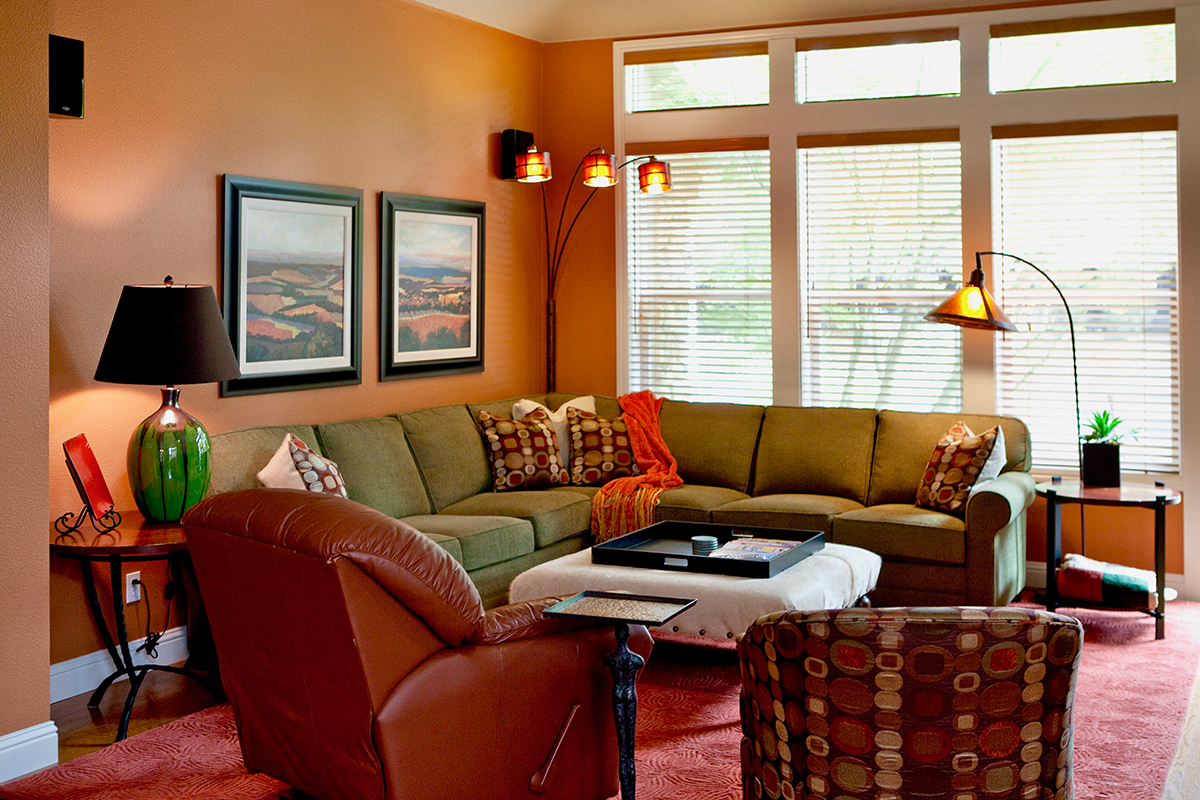What is the difference between a free consultation and fee initial consultation?
Obviously, it is your money. In a free consultation you may receive general ideas and suggestions about your project. The designer is trying to demonstrate their ability and the possibilities so that you will select them. Specific information and guidance is valuable and worthy of payment, so do not expect to get this type of information in a “free” consultation.
You should expect specific recommendations in a “fee” consultation. The designer is charging you for their time and expertise as it relates to your specific project. By providing you specific guidance you have an excellent means to evaluate if the designer is suited to your project. Do you like their style and demeanor? Have they demonstrated their creativity in their recommendations? Do they make sense?
What makes for a well-decorated room?
Obviously, there are a myriad of individual answers. One element, however, remains true about all interior design regardless of the style is that a well-decorated room is a series of layers upon layers that bring forth a creative and comfortable environment. So be mindful as you select upgrades or undertake a re-model that each element is a layer of the room design. You will working with your selection and how it integrates and compliments the entire room possibly for years to come.
How do interior decorator’s charge for their services?
There are several basic approaches to pricing common in the industry.
First, the designer might charge for their time and then charge a percentage over their cost of goods plus freight. Their time includes research, any travel, any project management time, and the time with the client. The most challenging to estimate or account for is the time it takes for research, which can be extensive.
Secondly, the designer may charge a retainer fee. The size of the retainer varies. A contract usually accompanies the retainer outlining the services and products that will be applied to the retainer. You should expect a timely detailed accounting of how the retainer is being used. Also the contract should describe the process in the event of cancellation and distribution of any balance remaining on the retainer.
Third, a designer might choose not to charge for time but only for the product plus and applicable freight/delivery charges. This approach seems simple, however, the designer has to be willing and financially able to stand behind the product should any difficulty occur.
Fourth, a hybrid method charges for time until a purchase is made. After a purchase is completed time is no longer billed. The client then has the option of purchasing furnishings and accessories directly from the designer. Or they may source product independently or from vendors the designer recommends. Usually there is no contract or retainer with approach.
Do I need a contract with my interior designer?
The answer depends.
If your interior designer works with a contract then by all means. Insure you fully understand the terms and cancellation language.
All your purchasing from an interior designer should be invoiced so that a formal record of the transaction with the terms of payment are available when anything comes into question.
There are numerous situations that can arise during an interior design project that realistically cannot be identified in a contract. So don’t be too concerned if your designer does not use a contract. The entire process requires you have trust in the designer and their ability to manage all the facets to complete the project. The designer has to stand behind the work and products.
What would you do or what color would you paint?
These seem like a very reasonable questions to ask any interior designer in a discussion about the space under consideration. So why does the designer hesitate giving you the answer?
“It’s not that easy…” From a designer’s perspective there are a myriad of elements that each effect any selection. How these elements will intermix with each other to create the absolute best outcome is the opportunity. So if a decision to change just one element occurs it requires re-thinking, the entire space. Yes, the entire space anything less is not prudent. Oh yes and of course they have to consider what you prefer.
So if you ask a designer, “What color would they paint the room?” be prepared for a long pause or they may even defer answering until they have more than a moment to contemplate your question.
What if I do not know what style I prefer?
Be assured you would not be the first person to feel this way. It is difficult to describe something so personal. An experienced designer has encountered many clients who feel this way. Where do you begin?
First, collect pictures of designs that you like. Gather designs that truly interest you. Cut them out of magazines…use your digital camera…use Pinterest…just pull things together which may well be possible. Share your work with the designer. They will definitely appreciate the work you have done as a jumping off point.
I caution you don’t be too attached to any one depicted image. An experienced designer will taken into consideration your space…the lighting, textures, and flow of the room as they develop with you your grand design. There will be many elements that pull the space together creating just the right ambiance you are looking to achieve.
The absolute best way to maximize your return from a designer is to keep a completely open mind as the design is unfolding. Don’t become attached to an element in the design for it may work or not work in the overall. You are creating “your space” so don’t react to an element until after you see it in its surroundings.
